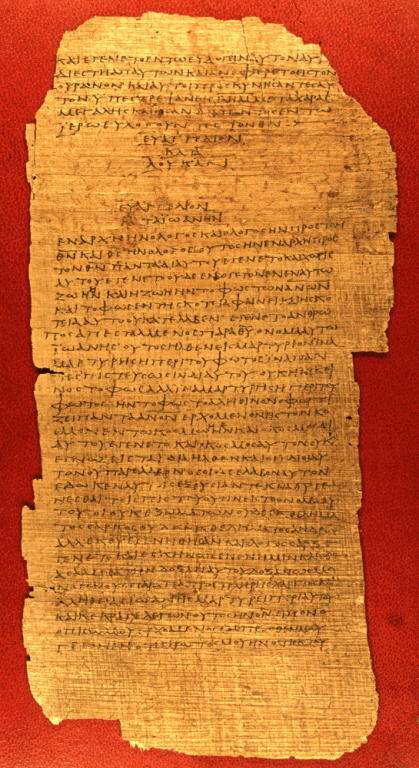M.J. Krueger, Christianity at the Crossroads (IVP, 2018) 256pp.
With the rise of increased Biblical illiteracy has also arisen increased church historical illiteracy. Both were on full display in the colossal reception the novel and movie the Da Vinci Code got at the turn of the 21rst century. Even among Christians who know their Bible’s rather well, there is still a widespread ignorance of where the Bible came from, including even a general ignorance about when and where the NT canon began to emerge. As it turns out, and as Michael Krueger’s new book Christianity at the Crossroads shows, a core canon of Gospels, Pauline letters, and a few other documents already existed in the second century A.D. as attested by citations in the Apostolic Fathers, manuscript evidence from the end of that century, the Muratorian canon, and a variety of other sources. It is simply not the case that there were no canonical Christian documents before the 4th century, though one needs to make a distinction between Scripture or Word of God recognition and canon consciousness. Various books that ended up in the NT were recognized as inspired Scripture before the full formation of the NT canon.
There are many virtues to Krueger’s careful study, not the least of which is he shows that too often the term canon has been taken to mean a complete and closed collection of books. No, says Krueger, canon refers to a rule or measuring rod, and in this case a group of books used to vet other burgeoning early Christian literature, including apocryphal documents both orthodox and heretical. The core involved our four Gospels and an extensive collection of Paul’s letters. It was not Irenaeus who invented the idea of NT in response to the heresies of Marcion in the mid to late second century. No, a positive recognition of the importance of having a collection of writings from the original apostles and their co-workers existed already before the time of Marcion (see e.g. 2 Peter 3 on a collection of Paul’s letters considered alongside of the other (OT) Scriptures). Heresy did not create orthodoxy, though clearly orthodoxy became more clearly delineated in response to heresy. Krueger notes the very profusion of early Christian literature arising in the second century which makes clear that it was not true that the earliest church was content to just rely on oral tradition when it came to apostolic traditions. And he is right as well that the governing authorities, such as Pliny, recognized the distinctiveness of the movement and that it included teaching and preaching on the basis of not only the OT but ‘the memoirs of the apostles’. The second century was a time of great growth and intellectual fertility for the church, but diverse would be a better term to describe the Christian movement then as opposed to ‘chaotic and self-contradictory’. Walter Bauer, and before him the Tubingen school of F.C. Baur and others as it turns out was wrong, as J.B. Lightfoot in his still valuable Apostolic Father volumes showed already at the end of the 19th century.
Krueger’s book is a helpful survey book and helps us see how the Jesus movement emerged in the Roman Empire and became more of a known and visible church, with a rather clear structure, and distinctive religious subculture. His book is a good place to begin understanding where Christianity and its canon came from after the NT era itself.













